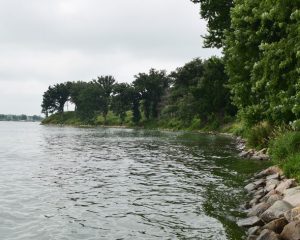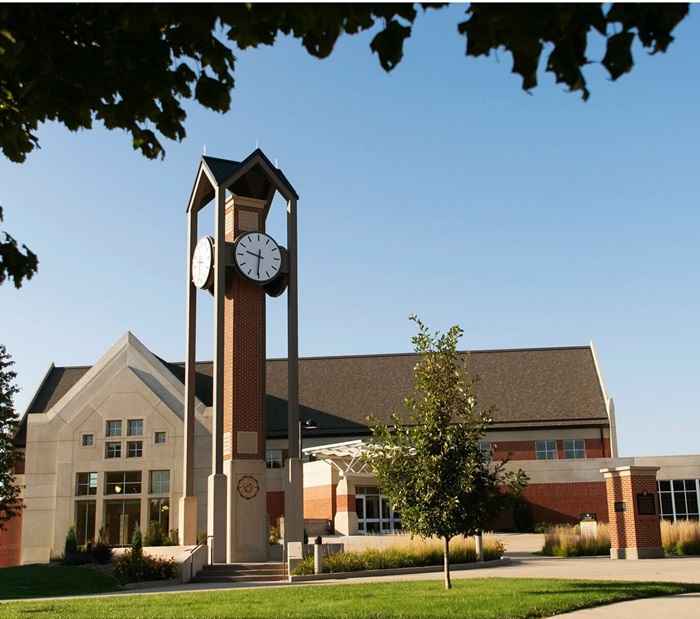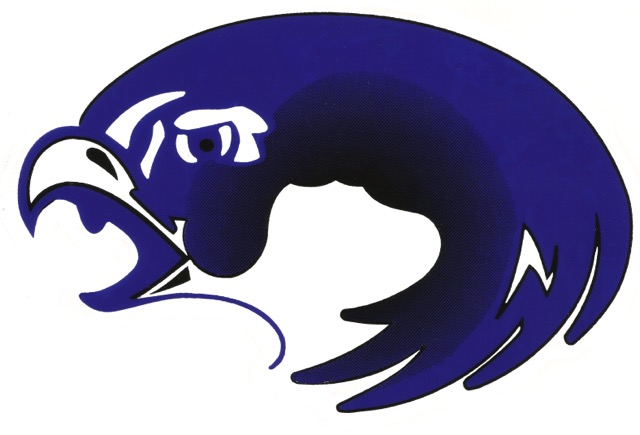Lake Park, Iowa — A four-year shoreline restoration project at Silver Lake, near Lake Park in Dickinson County, is entering its final phase, where contractors will continue clearing the honeysuckle, Chinese elm and autumn olive understory next to the lake, then replace it with native prairie to keep the soil in place.
Shoreline erosion had been identified as a contributing soil and an estimated 1,600 pounds of phosphorus to the lake each year, that has been assisting with Silver Lake’s declining water quality. The understory had choked out any ground cover leaving bare soil vulnerable to erosion during heavy rains.
High quality oaks and walnuts will remain to provide food and habitat for deer and turkey. Reestablishing the prairie will help to hold soil in place, creating an oak savanna along the shore.
With the overhanging branches gone, sunlight can again hit the lake shore which will support the growth of aquatic plants. These aquatic plants help stabilize the lake bottom, use nutrients in the water that help prevent algae blooms, protect the shore and provide habitat for fish and wildlife.
The $1.75 million project is a partnership between the Silver lake Protective Association, City of Lake Park, Dickinson County Water Quality Commission, and the Iowa Department of Natural Resources (DNR) Lake Restoration Program. It began in 2021.
Standing at the boat ramp on the west side of the lake, progress is easy to see – the reclaimed oak savanna with native prairie and newly rip rapped shoreline stretches from the northeast part of the lake 4,000 feet to the west, where work will soon begin on the final 3,500 feet.
The 1,032-acre natural lake has a maximum depth of less than 10 feet and nearly the entire lake is ringed with a narrow, 90-acre wildlife area. Trappers Bay State Park is located on the north shore and on the lake’s southeast corner, is a small, heavily used Silver Lake campground with limited facilities. It’s a popular place with area residents and fishermen.
On the southwest corner of the lake, a parking lot off 110th Avenue is near arguably the most unique feature of the area – three fens located in Silver Lake Fen State Preserve.
“To have all of that, plus three fens, including arguably the most dynamic fen in the state, in one place, is special,” said Chris LaRue, wildlife biologist with the Iowa DNR.
Fens are unique landforms that develop over thousands of years when rainfall percolates through soil and gravel layers, stopping at the clay layer, then flowing horizontally until reaching a hillside where it reappears at the surface as a spring.
At just the right flow rate, this spring will create and support a wetland plant community but not cause erosion. Over centuries, as plants die, the organic matter grows into mounds of peat as the spring continues to seep. Water seeping through the surface is calcium rich and the sedge mats have little veins of calcium that hardened and became little dams – called strings – that resemble contour lines on a map, and behind those little dams are small pools of water, called flarks.
Pushing through the tall, dew-covered vegetation, hands held high overhead, LaRue was making is way to the largest and most accessible of the three Silver Lake fens.
“It’s a one of the most visited fens in the state because of its proximity to the parking lot and its diversity of plant life,” LaRue said. The head high prairie vegetation gives way to the sedge mat zone of the fen where the plant community changes to a more wetland variety, and the plant height goes from head high to below knee level.
LaRue said 108 different plant species have been identified on the fen, including small white lady slipper, grass of Parnassus, common arrowgrass and prairie blazing star.
Silver Lake Fen was designated a state preserve in 1972.
(Iowa DNR photo)












